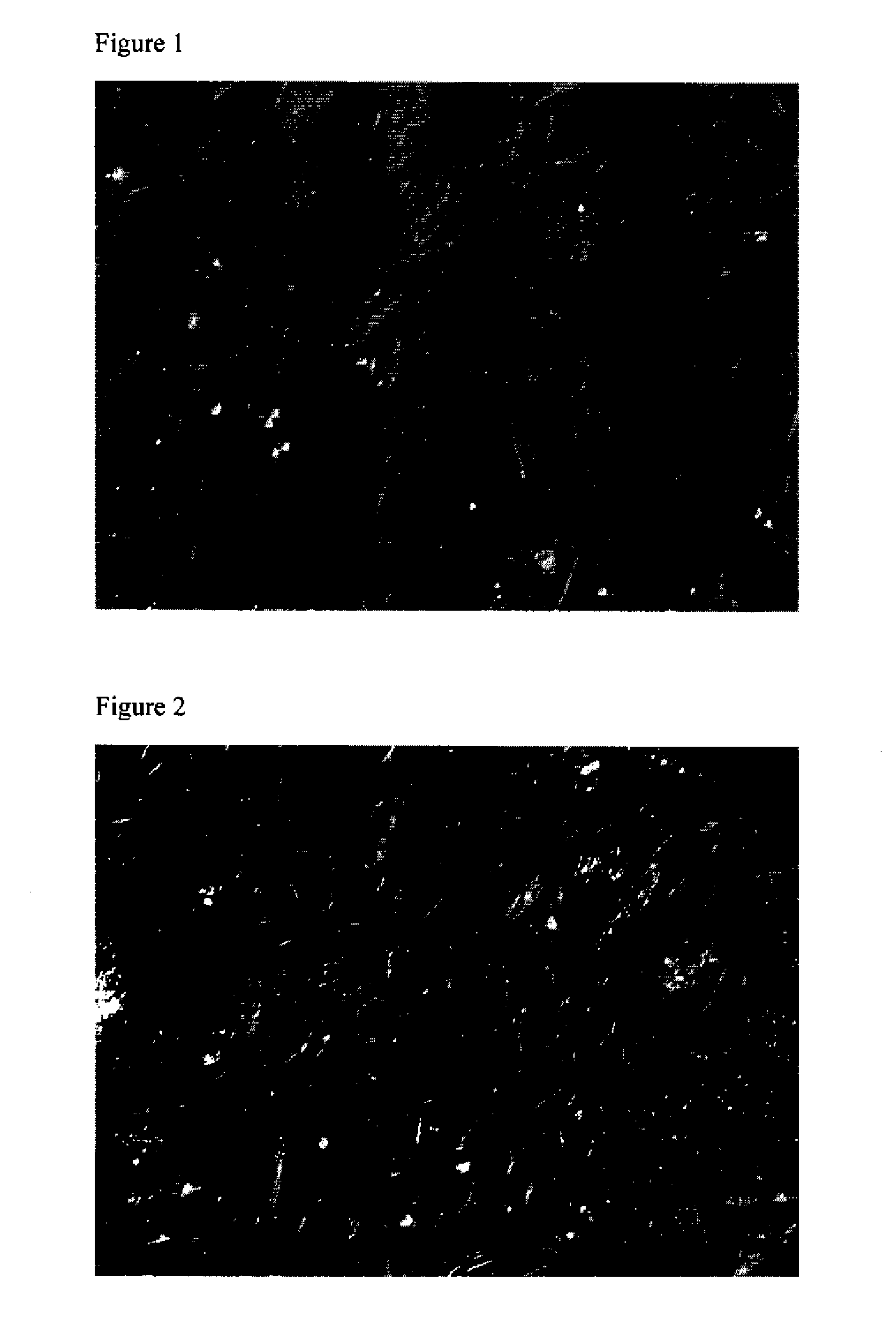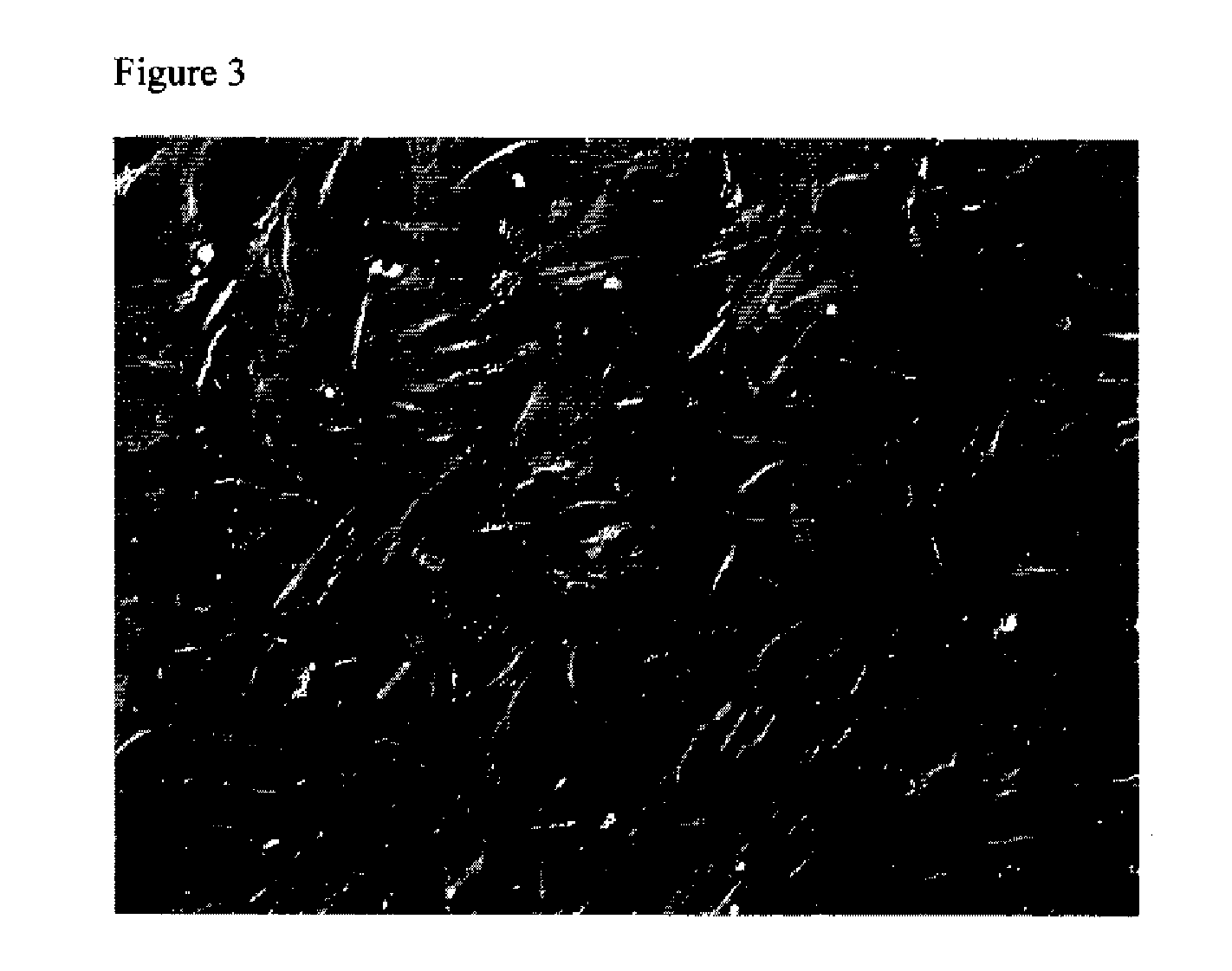Clinic compliant method for banking human placental mesenchymal cells
a mesenchymal cell and clinic-compliant technology, applied in the field of medicine technology, can solve the problems of not meeting the standards for clinical application, the method of expanding cells by fetal bovine serum presents potential risks, and the method has the potential risk of introducing cross-contamination with pathogens from different individuals to the cultured cells
- Summary
- Abstract
- Description
- Claims
- Application Information
AI Technical Summary
Benefits of technology
Problems solved by technology
Method used
Image
Examples
example 1
Isolation of Human Placental Amniotic Mesenchymal Stromal Cells and Human Placental Chorionic Mesenchymal Stromal Cells
[0111]Fresh human placenta tissue of about 20 g was dissected from a human term placenta at the time of birth under aseptic conditions. The tissue was stored in a 50 ml centrifuge tube containing 20 ml of DMEM (Invitrogen, product code: 11885084) having 1% of human cord blood serum and 1% of penicillin / streptomycin solution (Invitrogen, product code: 15140122). The tissue in the protective solution was transferred to a cGMP laboratory within 30 minutes, and was washed three times in PBS (Invitrogen, product code: 14040133) containing 1% penicillin / streptomycin solution before processing.
[0112]To isolate placental amniotic and chorionic mesenchymal stromal cells, chorionic plate was dissected from the placenta tissue with an aseptic surgery scissor, washed three times in the PBS, cut into pieces of about 1 mm3 in size, and then digested with a combination of collagen...
example 2
Preparation of Autologous Cord Blood Serum and Human Cord Blood Serum for Placental Cell Growth
[0114]Cord blood of each placental cell donor was collected and processed separately according to the following method. The cord blood was collected at the time of birth using a 50 ml clinic syringe with a 16 G needle. The needle was inserted into the umbilical vein of the placenta and the cord blood was taken from the umbilical vein into the syringe. The blood was then transferred to a 50 ml centrifuge tube that is free of anticoagulants. 30 to 40 ml of cord blood was collected in each tube. And the blood was transferred to a cGMP laboratory within 30 minutes.
2.1 Preparation of Autologous Cord Blood Serum
[0115]According to different donors, the collected cord blood in centrifuge tubes that are free of anticoagulants was respectively clotted for 45 minutes at 37° C., cooled in ice water for 30 minutes and then centrifuged at 1000 g for 10 minutes at room temperature. The serum on top of th...
example 3
In Vitro Expansion of Human Placental Mesenchymal Stromal Cells Using Human Cord Blood Serum
[0118]The human placental amniotic and chorionic mesenchymal stromal cells obtained according to Example 1 were dispersed in complete DMEM at a concentration of 1×106 (one million) cells per ml medium and plated in a 25 cm2 tissue culture flask at a volume of 7.5 ml per flask. The components in said complete DMEM included: 89% of DMEM, 10% of human cord blood serum and 1% penicillin / streptomycin solution. The cells in flask were cultured in 37° C. 5% CO2 air. After one week, the culture medium was replaced with fresh complete DMEM medium and continued to be cultured for one more week. Cells were subcultured at the end of the second week and in every 3 to 4 days thereafter using fresh complete medium. The method for each subculture was: the culture medium in culture flask was removed with an aseptic sucker on a clean bench, and the cell layer grown on the surface of the flask bottom was washed...
PUM
| Property | Measurement | Unit |
|---|---|---|
| Temperature | aaaaa | aaaaa |
| Temperature | aaaaa | aaaaa |
| Fraction | aaaaa | aaaaa |
Abstract
Description
Claims
Application Information
 Login to View More
Login to View More - R&D
- Intellectual Property
- Life Sciences
- Materials
- Tech Scout
- Unparalleled Data Quality
- Higher Quality Content
- 60% Fewer Hallucinations
Browse by: Latest US Patents, China's latest patents, Technical Efficacy Thesaurus, Application Domain, Technology Topic, Popular Technical Reports.
© 2025 PatSnap. All rights reserved.Legal|Privacy policy|Modern Slavery Act Transparency Statement|Sitemap|About US| Contact US: help@patsnap.com


